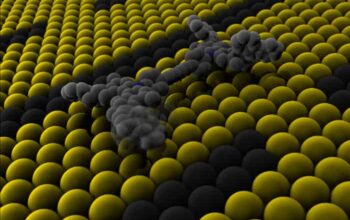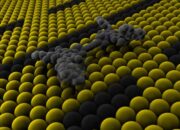Understanding the distinction between atoms and qubits is pivotal for comprehending the realms of quantum mechanics and quantum computing. While atoms signify the foundational building blocks of matter, qubits represent a novel approach to computing based upon quantum principles. This article will elucidate the differences across various dimensions, including definitions, properties, applications, and the implications for future technologies.
Definitional Framework
Atoms are the fundamental units of matter, embodying a nucleus comprised of protons and neutrons, orthogonally surrounded by electrons residing in discrete energy levels. They have mass, volume, and physical properties that govern the nature of the substances they constitute. In contrast, qubits, or quantum bits, function as the elementary units of quantum information. Rather than existing solely in binary states (0 and 1), qubits can occupy a superposition of states, a characteristic that is exclusive to quantum systems.
Physical Properties
One of the salient differences lies in the physical properties associated with each. Atoms maintain stability and can exist in various isotopic forms due to differing neutron counts, thereby influencing their chemical behavior. Their interactions are primarily dictated by electromagnetic forces, resulting in the formation of molecules and compounds.
Qubits, by contrast, are characterized by the inherent properties of quantum superposition and entanglement. Whereas a classical bit is unequivocally 0 or 1, a qubit can exist in multiple states simultaneously, represented mathematically by complex numbers on the Bloch sphere. This unique feature allows quantum computers to process vast amounts of information far more efficiently than classical systems solely based on binary logic.
Types and Representation
Within the atomic domain, there are numerous types of atoms, each defined by its atomic number and unique electronic configuration. Noteworthy examples include hydrogen (one proton), carbon (six protons), and uranium (ninety-two protons). These elements exhibit distinctive properties such as reactivity, ionization energy, and electronegativity. Furthermore, atoms can bond in various ways: ionic, covalent, and metallic bonding, showcasing their versatility in the formation of complex substances.
Conversely, qubits are usually realized through a variety of physical systems, such as superconducting circuits, trapped ions, or photons. Each implementation has advantages and challenges relating to coherence, fidelity, and scalability. Superconducting qubits, for instance, leverage the principles of Josephson junctions to manipulate quantum states, while trapped ion qubits utilize electromagnetic fields to confine and control ions. This diversity in representation allows researchers flexibility in developing quantum technologies suited for specific applications.
Mechanisms of Information Processing
Information processing in atoms is substantially classical; the behavior of atoms can be described through classical physics to a large extent. They can form stable configurations and carry energy as they transition between energy states. For example, the emission or absorption of light pertains to the movement of electrons between energy levels in an atom, following well-defined rules governed by quantum mechanics.
In contrast, qubit operations unfold through the manipulation of quantum states. Quantum gates are employed to perform operations on qubits, such as the Hadamard gate for creating superpositions or the CNOT gate for implementing entanglement. These operations allow combinations of qubits to represent multiple states concurrently, thereby performing calculations that would be infeasible using classical bits. Such parallelism is at the heart of quantum supremacy, where quantum computers outperform classical machines in specific tasks.
Applications and Implications
The applications of atoms traverse a vast spectrum of scientific and technological domains, encompassing chemistry, materials science, and biophysics. For instance, the understanding of atomic interactions is crucial in drug design, nanotechnology, and the material sciences. Knowledge of atomic structure leads to innovations in semiconductors, ceramics, and composite materials, underlining the pivotal role of atoms in both nature and technology.
Conversely, qubits herald a transformative potential in information technology, particularly in the field of computational complexity. Quantum algorithms such as Shor’s algorithm can factor large integers exponentially faster than the best-known classical algorithms, thereby impacting cryptography and data security. Additionally, quantum simulations offer profound insights into quantum systems themselves, fostering advancements in material discovery and fundamental physics.
Coexistence and Future Directions
Despite their differences, a conceptual synergy exists between atoms and qubits. The development of qubit technology often relies on manipulations of atomic systems to achieve desired computational outcomes. Researchers are investigating how atomic interactions can enhance qubit coherence and scalability, thus bridging the gap between classical understanding and quantum innovation.
Moreover, the future direction of research in quantum computing may not wholly discard classical computational theories based on atoms but rather seek to integrate both paradigms. Hybrid systems that leverage the strengths of each could yield novel computing architectures that transform various industries, from finance to artificial intelligence.
In summary, while atoms serve as the primary constituents of matter with classical behavior, qubits embody the intricacies of quantum mechanics, enabling unprecedented computational capabilities. The delineation of their roles enriches our understanding of the universe and directs our ambitions toward the frontiers of technology.










